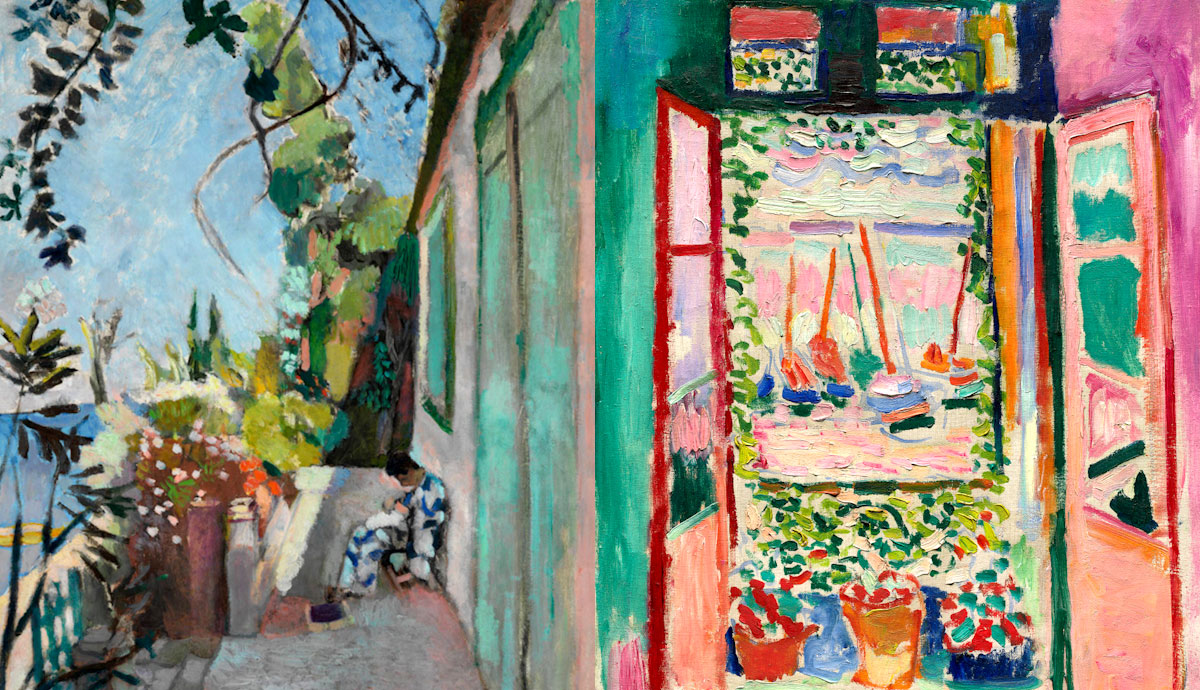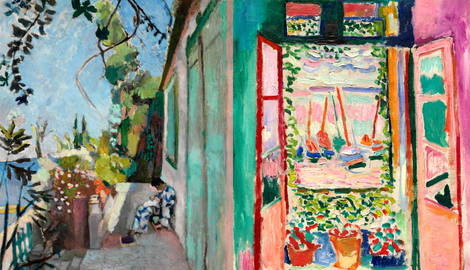
One of today’s most popular French cities, Saint-Tropez, was once a quiet fishing village. After arriving in Saint-Tropez on his ship, Paul Signac fell in love with its bright colours and beautiful seaview. He decided to buy a house and turn this into his studio. Moreover, he didn’t keep Saint-Tropez to himself, but invited various colleagues to join him. Eventually, Saint-Tropez turned into a centre for avant-garde art. In this article, it will be explored how Signac’s own work and ideas, as well as those of the other painters he invited, contributed to Saint-Tropez’s importance for the development of modern art.
The Development of Paul Signac’s Style in Saint-Tropez

Paul Signac’s choice to make Saint-Tropez his home in 1892, also marked the onset of a specific phase in his career. During the twenty years following his move, he would continue travelling between Paris, Brittany and his newly found home at the Southern coast. A year prior to Signac’s move, his dear friend and colleague, George Seurat, passed away.
Both Signac and Seurat had become known as pointillists, but had also been on a mission to make Neo-impressionism well-known and loved. Seurat’s death came as a shock to Signac, and might even have been one of the reasons why he decided to sail out on his yacht. However, Seurat’s passing did not make him any less eager to further develop, update and improve the Neo-impressionist style. Signac was a man with a great social and artistic agenda, so the move to Saint-Tropez gave him new inspiration.

During this phase in his life, Signac started playing with his style, which was somewhere between pointillism and Neo-impressionism. He began to let go of the sharper lines that he had so far applied to most of his compositions. Additionally, Signac also began to change the size and shape of the dots that had been a defining characteristic of the pointillist style. These dots became bigger and started looking more like stripes.
Signac reversed the way in which he created demarcated areas in his composition. In the pointillist style, the small dots created a soft blend of colours that were then framed by sharper lines. In the Neo-impressionist style, the dots changed into stripes, while at the same time the sharper lines were softened. As a way to replace these lines, areas of contrasting colours were placed alongside each other to form demarcated areas. The changes Signac made can be perceived when comparing his pointillist painting seen above with his Neo-impressionist ones seen below.

While Saint-Tropez and its surroundings gave Signac valuable new inspiration, he himself also bestowed something important upon this fishing village. Thanks to the nature of his work and his modernist philosophy, he branded Saint-Tropez as a safe haven for new ideas and creations. Moreover, the alterations Signac, among other artists, made to his work during this period in Saint-Tropez, laid the foundation for the first modern art movement of the twentieth century, called Fauvism.

The word fauve means wild or wild cat in French. In the art, the meaning of this word translates to the use of bright colours and rough, abrupt brushstrokes. The Fauvist art built upon the already loosened brushstrokes and bright, contrasting colours of the Neo-impressionist works. Moreover, Signac wouldn’t remain the only artist working in Saint-Tropez, nor the only one who would create a basis for twentieth-century modern art.
Other Artists Join Paul Signac in Saint-Tropez

After buying his villa called La Hune in Saint-Tropez, Signac transformed a part of it into his studio. Soon after settling in together with his wife and mother, Signac invited other painters to join him. Among these were Henri Matisse, Maximilien Luce, Théo van Rysselberghe, George Braque, Henri-Edmond Cross and André Derain.
As word spread and the mentioned artists brought their paintings from Saint-Tropez back to Paris, more people gained an interest in this southern fishing village. Saint-Tropez was not just a beautiful coastal town now, but an important art centre in the making too. Naturally, more artists followed in their footsteps. One by one, these artists fell under Saint-Tropez’s spell, and within no time, it turned into an artistic pilgrimage site. Many artists would now come back annually or every once in a while, to soak up its riches.

Some of the artists who joined Signac in Saint-Tropez, were also part of the Neo circle. In fact, Signac, Rysselberghe, Cross and Luce became the main figures of the Neo-impressionist movement and often exhibited together. This meant that these artists also brought modern philosophy to Saint-Tropez, reinforcing the modern tone that Signac had already set there. The paintings that these artists created consisted of many different scenes of Saint-Tropez painted in Neo-impressionist style.
There were paintings of views of the ocean or the village of Saint-Tropez, landscape scenes from the close surroundings of the village, scenes of leisure time, as well as some occasional still-lives. Just as the impressionists, the Neo-impressionists depicted rather spontaneous scenes. Fragments out of the everyday lives of everyday people. This was also a testament to the effect that photography had on paintings.

However, the Neo-impressionist way of painting was even more spontaneous than that of the Impressionists and pointillists. The style would also pave the way to Fauvism. Henri Matisse, who would join Signac in Saint-Tropez during the summer of 1904, began to paint works that anticipated his more radical Fauvist style.
For this reason, the summer of 1904 has been widely recognized as the turning point in Matisse’s career. Both Saint-Tropez itself, with its bright colours, and the exchange of ideas with Signac and Cross, inspired Matisse to work in a more spontaneous, colourful style. When Matisse and André Derain worked together in Collioure, near the Spanish border, a year later, he created even more radical Fauve works. Works that had such vibrant colours that an outrage happened at the Salon d’Automne exhibition.

Apart from establishing a new style of painting, the artists from the neo circle also shared a common vision of French society. Signac, Luce, Cross and Rysselberghe shared an anarchic vision of social equality. Moreover, life in Southern France, where the pace of everything was much slower and gentler than in Paris, allowed for these utopian ideas to remain more realistic. In the French capital, life changed rapidly. Poverty and sickness were visible and sensible.
In the countryside around Saint-Tropez, on the other hand, the agrarian lifestyle had remained almost unchanged. Southern France offered an environment where people generally lived in good circumstances. For this reason, the artists who lived in this part of France lived within this pleasant bubble. Inspiration was drawn from nature, the sea, the lives of fishermen or people on holidays.
Paul Signac’s Works at the Musée de l’Annonciade in Saint-Tropez

The legacy of Saint-Tropez’s days as the centre of avant-garde art can be seen at the Musée de l’Annonciade. This museum, housed in the former Notre-Dame de l‘Annonciade chapel in Saint-Tropez, was founded in 1922. The museum is regarded as the first museum of modern art in France. At the time of its foundation, the works of living artists were adorning its walls. Nowadays, one can still see large parts of the same collection dating back to the 1920s.

Moreover, apart from the original collection from the 1920s, one can also find additional works at the museum. Many of these, 56 to be precise, were donated to the museum by Georges Grammont in 1955. The museum’s collection is now dedicated to the art of the Pointillists, Neo-impressionists, Fauves and the artists of the group called Les Nabis. All of these were art movements that marked the transition from the classical art styles, like realism, romantic art and neoclassicism to the modern art styles of the nineteenth century. If you ever visit Saint-Tropez, make sure you pay this beautiful museum a visit and discover Signac’s works yourself.










